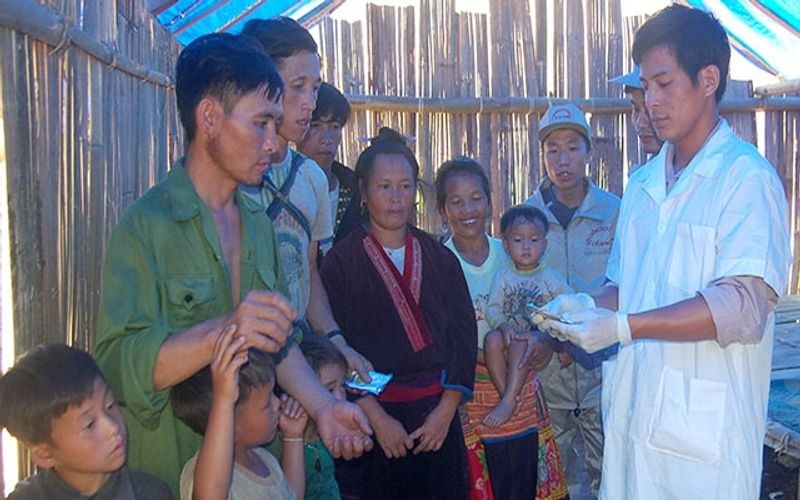
Ending child marriage towards a world where girls are free to dream: UNFPA Viet Nam
Latest
 |
| The United Nations Population Fund (UNFPA) in Viet Nam has called on the community to take urgent actions to end child marriage. (Source: Hanoi TImes) |
The United Nations Population Fund (UNFPA) in Viet Nam has called on the community to take urgent actions to end child marriage on the occasion of Valentine’s Day, February 14, with a view to building a world where girls are free to dream.
According to the UNFPA, to end child marriage, many changes are required, including enhancing and enforcing laws against the practice, promoting gender equality, and ensuring the community’s commitment to girls' rights.
Nevertheless, young people must also understand and claim their rights. It means that they must be provided with accurate sexual and reproductive health information, education and skills development opportunities, the UNFPA stressed.
In Viet Nam, the incidence of early marriage has been falling, according to findings of a survey conducted by the EMPoWR project on 1,725 ethnic minority children across 17 communes of six districts in Ha Giang, Lai Chau, Quang Binh and Quang Tri in late 2020. However, only 28% of the respondents said they were provided with knowledge on child marriage.
The survey indicated that only 52% had a correct understanding of the legal minimum age for marriage. Many respondents even misunderstood the age at which men are allowed to get married.
Another survey measuring Viet Nam Sustainable Development Goal indicators on Children and Women (SDGCW) 2020-2021, co-launched by the General Statistics Office of Viet Nam, the United Nations Children’s Fund (UNICEF) and the UNFPA in Viet Nam, among women and men aged 20-24 showed that 14.6% of women and 1.9% of men were married or in union before the age 18.
Worldwide, 19% of women between the ages of 20 and 24 were married and/or cohabiting before the age of 18. In the context of the Covid-19 pandemic, up to 13 million girls would be forced to become brides by 2030.
A report of the UNFPA said that over 650 million women and girls worldwide have been married as children. More than 1 in 3, or some 250 million, were married before the age of 15.
Child marriage is a human rights violation, the report said, adding that it threatens girls' lives and health, limits their opportunities and future prospects, including their job prospects, and has long-term effects on their families.
Girls who marry before turning 18 are less likely to remain in school and more likely to experience domestic violence. They would more probably die due to complications in pregnancy and childbirth than women in their 20s. Their infants are prone to be stillborn or die in the first month of life. These complications are a leading cause of death among older adolescents in developing countries.
Despite laws against it, the practice remains widespread, in part because of persistent poverty and gender inequality.
Therefore, addressing child marriage is one of the solutions to contribute to poverty reduction, promoting gender equality and human rights as well as contributing to the sustainability of social and economic development for population and community, the UNFPA affirmed.
The Vietnamese Government has exerted efforts to address child marriage. The Law on Marriage and Family (2014) and the Child Law (2016) prohibit child marriage and activities relating to organizing or supporting child marriage. In 2015, the Prime Minister approved the National Program to address child marriage for the period 2015-2025.
“A target on eliminating child marriage presents us with a historic opportunity to help girls rewrite their futures. We will work with the Vietnamese Government to uphold the rights of adolescent girls so that girls can reach their potential and the country can attain their social and economic development goals", the UNFPA stressed.
The organization added that strong partnerships at all levels are required to end child marriage. The issue requires the Vietnamese Government, local actors, the global community and the UN to act together to give back to children their choices, their dreams, their futures and their childhoods.

















